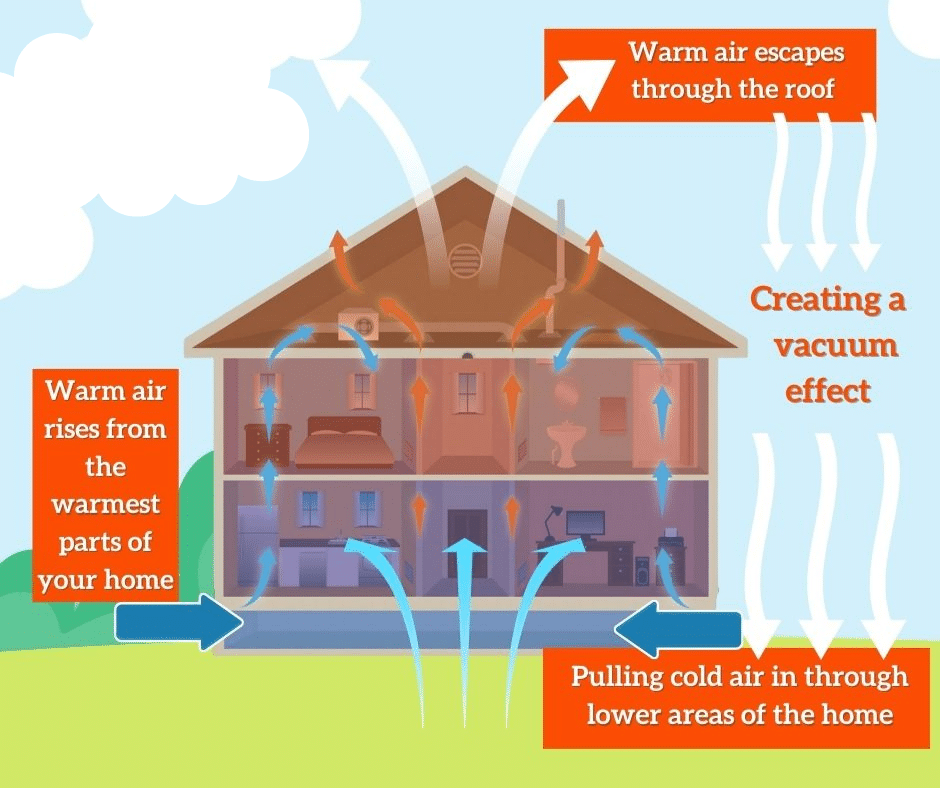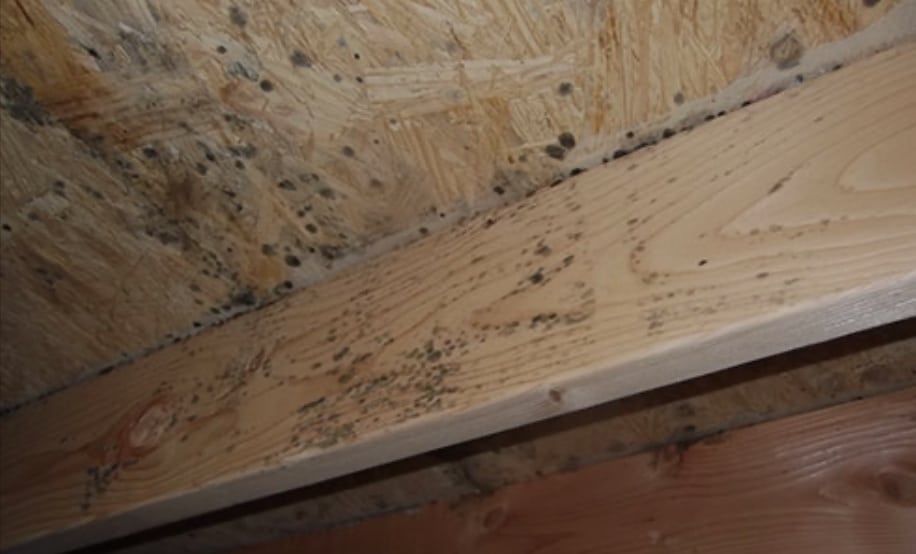The “Stack Effect”, or “Chimney Effect” as you may have heard it called, sounds confusing; but it’s really all about how the air flows throughout your home.
TL;DR
The Stack Effect (aka Chimney Effect) explains how air moves through your home — entering from the crawl space and exiting through the attic. This airflow can bring mold spores, humidity, and contaminants into your living space. Sealing your crawl space with encapsulation improves air quality, reduces energy bills, and prevents costly damage.
What Is the Stack Effect?
The “Stack Effect” — also known as the “Chimney Effect” — describes how air naturally flows upward through a home. As air enters from lower levels like crawl spaces or basements, it rises through the structure and escapes via the attic, vents, or gaps around windows and doors.
This process is caused by temperature and pressure differences: warm air rises, creating a vacuum that draws in cooler outside air through the base of your home.
In winter, warm air inside escapes upward, pulling in cold air from below. In summer, the process can reverse, with hot outside air entering through the attic and forcing cool indoor air downward.

Expert Insight on Seasonal Ventilation
According to Santa Fe™, a top manufacturer of indoor air quality products:
“During cold winter weather, homes usually exfiltrate enough fresh air naturally. But in summer, when windows are closed and wind pressure is minimal, mechanical ventilation is often required — especially in well-sealed homes.”
👉 You can read their full Q&A on the Stack Effect here.
Why the Stack Effect Matters
Here’s the kicker: Up to 50% of the air you breathe inside your home comes from your crawl space.
That’s a big deal when you consider that crawl spaces often harbor:
- Moisture and mold
- Fungi and pests
- Musty odors and allergens
These pollutants rise into your home, affecting your family’s health and comfort. You may also notice:
- Rotting or decaying floor joists
- Water stains on baseboards
- Mold spots (green, white, or blue) on interior surfaces
👉 For more, see our guide: How to Recognize and Resolve Mold In A Crawl Space
The Science Behind the Stack Effect
This phenomenon is driven by air pressure and temperature differences. Warmer air rises and escapes through the upper parts of your home, creating suction that draws in colder, denser air from your crawl space — and all the pollutants that come with it.
How the Stack Effect Impacts Your Home
Mold & Condensation
Mold spores from the crawl space float through your home and latch onto damp walls, ceilings, and surfaces — especially in humid climates. Once attached, they grow quickly, affecting air quality and even causing structural damage.

Higher Energy Costs
Open crawl spaces lead to 15–25% higher energy usage. Without proper insulation or moisture control, you’re constantly battling temperature swings that force your HVAC system to work harder. That means:
Colder winters with underperforming heating
Higher bills in summer due to A/C overuse
How to Stop the Stack Effect: Crawl Space Encapsulation
The most effective long-term fix is crawl space encapsulation — sealing and insulating your crawl space to prevent outside air, moisture, and pests from entering.
Benefits of encapsulation:
- Save 30–50% on utility bills
- Prevent mold, mildew, and pest infestations
- Improve air quality throughout your home
- Extend your home’s structural life
According to the EPA, up to 40% of indoor air quality problems originate from crawl space pollution — so addressing this area is critical.
Take Action: Schedule a Free Inspection
Ready to protect your home from the effects of uncontrolled airflow?
👉 Contact Crawlspace Medic today to schedule your free crawl space inspection. Their specialists will assess your crawl space and recommend the right encapsulation solution to keep your home dry, healthy, and efficient.

